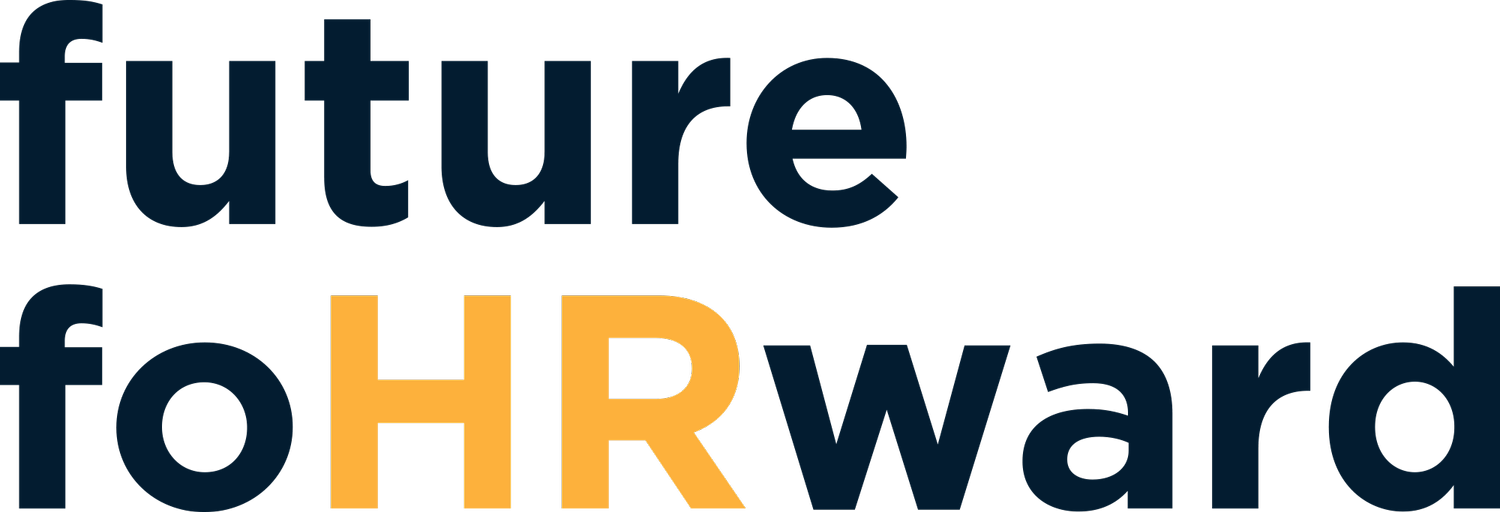the foHRsight podcast: Vision for 2025: Transforming Workplaces with Purpose and Hope
In episode 103 of the foHRsight podcast, Mark and Naomi explored how hope serves as more than just an optimistic outlook - it's a powerful catalyst for workplace transformation. Their discussion revealed that hope has scientific backing as a driver of innovation and problem-solving capabilities.
Mark shared an enlightening perspective on hope's definition: "Hope is defined as something that you cherish, a desire with anticipation to want something to happen or be true." He went on to explain that hopeful thinking actively shapes our cognitive processes, enhancing our ability to solve problems and think creatively. This scientific foundation makes hope a crucial element for workplace innovation and transformation.
Key Workplace Hopes for 2025
1. Revolutionizing Hybrid Work Approaches
One of Naomi's most passionate hopes for 2025 centers on transforming how organizations approach hybrid work. With conviction, she expressed, "I really hope we start to get off the whole 'work gets done' conversation and shift to outcomes. And finally treating hybrid working like a strategy and not a policy.”
Her optimism isn't unfounded. She referenced recent research by Nick Bloom showing that compliance with return-to-office mandates has actually decreased, dropping from 53% to the forties. This trend suggests a crucial turning point in workplace flexibility. As Naomi noted, organizations need to be particularly mindful of who leaves when strict policies are enforced: "You have very little control over who quits... more likely people who are more marketable and are more likely to get a new job are gonna quit. And that's your top talent."
2. Strengthening HR's Strategic Position
Both leaders shared compelling visions for HR's enhanced strategic role in 2025. Naomi articulated a comprehensive hope for the profession's evolution, emphasizing the need for organizations to not just verbally acknowledge HR's importance but to demonstrate it through action. She envisions a future where HR truly partners with executives to solve their biggest business challenges, noting that "the biggest business challenges are often people challenges."
Mark built upon this vision, sharing his hope for HR to serve as a bridge-builder within organizations. He sees HR playing a crucial role in fostering connections and bringing people together around common goals, particularly in our currently divided world. As he explained, "Work is also a great equalizer and a way of bringing people together around a common goal." He specifically highlighted the importance of supporting men in the workplace, emphasizing that this focus shouldn't come at the expense of other groups but rather as part of a comprehensive approach to workplace well-being.
3. Optimizing AI Integration
The discussion around AI revealed exciting possibilities for 2025. Naomi expressed hope for seeing "impactful positive momentum with AI that companies really start to reap the opportunity and optimize it around solving specific problems that take a lot of human time and don't create a lot of value." She outlined specific areas where AI could transform HR functions, including talent acquisition, development, training, and HR operations.
Mark shared a recent practical example of AI's potential, describing his experience with Microsoft Copilot: "Having just properly had Copilot loaded into our system internally just yesterday... I had to step out of a six-hour conference call for an hour... asked Copilot to give me a summary of what I missed, and it gave me a really great summary." This led to an interesting discussion about how AI might help organizations recognize when meetings could be handled asynchronously, potentially transforming workplace communication patterns.
4. Building Meaningful Connections
Mark emphasized HR's unique position to foster meaningful connections in an increasingly divided world. He envisions workplaces as spaces where people can build bridges across differences, maintaining that organizations reflect broader society but also offer opportunities to bring people together. He stressed the importance of encouraging empathy and compassion, suggesting that these qualities in the workplace could positively influence people's broader lives and perspectives.
5. Driving Economic Growth
Looking at the broader picture, Mark expressed hope for economic growth in 2025: "I'm also hopeful that in 2025, there's a bit more growth in the world." He emphasized that this growth should extend beyond mere numbers, creating more opportunities for people to participate and feel empowered. Despite potential challenges, particularly noting considerations "south of the border" from their Canadian perspective, he maintains optimism about the potential for positive economic development.
6. Evolving DEI Initiatives
Both leaders shared thoughtful perspectives on the evolution of diversity, equity, and inclusion efforts. Naomi highlighted the need to move beyond the potentially politicized acronym to focus on meaningful outcomes: "Stop focusing on the acronym that's become a little bit of a bad word in some circles and really figure out what we mean by that and what outcomes we're looking to drive.”
Mark agreed, adding that core concepts like belonging, connection, respect, and civility should be universal values: "Surely there aren't those, those can't be things that we would argue about. They must be... in a society that needs to kind of operate in a fairly cohesive way, those are important things that we can't lose sight of."
Turning Hopes into Action
The conversation emphasized that hope alone isn't enough - it must be paired with action. As Naomi aptly put it, "Hope is not a strategy." The leaders discussed practical approaches to manifesting these hopes, including strategic planning, community building, and leveraging technology effectively.
The podcast highlighted the importance of visualization as a tool for achieving these hopes. Mark suggested an exercise: imagine sitting on December 31st, 2025, reflecting on the year's achievements. This forward-looking perspective helps create a clearer path toward desired outcomes.
Impact and Implementation
Mark's focus on impact for 2025 resonated throughout the discussion: "I think 2025 is gonna start to see some of those things come to fruition, which I'm excited about. And hopefully, people can then start to see the difference we're trying to make." This emphasis on tangible results underscores the importance of moving beyond hope to concrete action.
Looking FoHRward
The shared hopes for 2025 paint a picture of workplaces becoming more inclusive, efficient, and human-centered environments. By combining strategic thinking with hopeful vision, HR leaders can drive meaningful change across organizations. As Naomi concluded, "It's an amazing time and a very challenging time to be in the people space. But I think if we could get very grounded in the problems we're trying to solve and the outcomes we're looking to achieve, I think we'll be better off."




